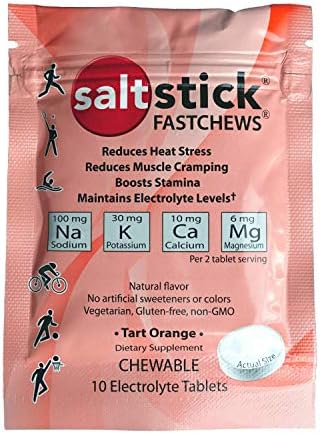Cardio and Keto: Essential Insights for Beginners
This post contains affiliate links. If you make a purchase through these links, I may earn a small commission at no extra cost to you. Learn more.
The ketogenic diet has become a popular choice for those looking to lose weight by switching the body’s primary fuel source from carbohydrates to fats.
This shift can be especially appealing to those who enjoy cardio exercises and are curious about how the keto diet might impact their performance.
Individuals on the keto diet may experience enhanced fat burning and muscle recovery when combining it with moderate-intensity cardio.

Adapting to keto can present some challenges, particularly regarding energy levels during intense workouts.
The body needs time to adjust to using fat as its main energy source, which may temporarily lead to decreased stamina.
This can be important for those who regularly engage in cardio exercises and want to maintain optimal performance.
For those considering the combination of keto and cardio, understanding the balance of macros and managing energy levels is key.
Developing a suitable nutritional strategy can support energy needs and may help in achieving fitness goals successfully.
Want a personalized eating plan that fits your fitness and fat-burning goals? Try this Custom Keto Diet Plan designed for active lifestyles.
Key Takeaways
- Keto may boost fat burning and muscle recovery with cardio.
- Energy levels can drop when starting keto, affecting workouts.
- A balanced approach can align keto and cardio goals.
Understanding the Keto Diet and Cardio

The keto diet and cardio exercise both play unique roles in health and fitness.
The keto diet alters the body’s energy use, while cardio supports heart health and endurance.
What Is the Keto Diet?
The ketogenic diet focuses on reducing carbohydrate intake and increasing fat consumption.
This shift pushes the body to use fats rather than carbs for energy.
People typically aim for a macros ratio of about 70-75% fat, 20% protein, and 5-10% carbohydrates.
When carbs are limited, the liver produces ketones through a process called ketogenesis.
These ketones become the primary energy source, which can help with fat loss and energy stability.
Some common foods on the keto diet include avocados, oils, nuts, meats, and low-carb vegetables.
Many appreciate the keto diet for its potential to improve metabolic health, support weight loss, and maintain energy levels throughout the day.
For a deeper dive, read How Intermittent Fasting Works with Keto to learn how combining both can supercharge fat loss.
How Does Cardio Exercise Work?
Cardio exercise involves rhythmic activities that increase heart rate and breathing.
Running, cycling, and swimming are typical examples.
This exercise type strengthens the heart and lungs, improves circulation, and boosts endurance.
During cardio, the body uses glucose from carbohydrates as a quick energy source.
With ongoing activity, the body taps into fat stores for energy.
Cardio can be adjusted in intensity and duration to meet individual fitness goals, making it a flexible option for many.
Regular cardio exercise is known to enhance mood, support weight control, and reduce the risk of chronic diseases.
The Science of Ketosis
Ketosis is a metabolic state where the body primarily uses fat as fuel instead of glucose.
This occurs when carbohydrate intake is low, and fat intake is high, prompting the liver to produce ketones.
These ketones circulate in the blood, providing a stable energy source for brain and muscle function.
Entering ketosis usually takes a few days of strict dietary adherence.
Some indicators of ketosis include increased ketone levels in the blood, reduced hunger, and a distinct fruity breath scent.
Maintaining ketosis involves careful monitoring of food intake and balancing nutrients to keep the body in this fat-burning state.
For those on a keto diet engaging in cardio, understanding ketosis helps optimize energy use during workouts.
Learn more about The Science of Ketosis from post for more detail.
Benefits and Challenges of Combining Cardio with Keto

Combining cardio workouts with a ketogenic diet can offer several health benefits, but there are also challenges that could arise.
Individuals might experience increased energy levels and weight loss, yet they may also face side effects like keto flu and fatigue.
Potential Health Benefits
Engaging in cardio while on a keto diet can potentially boost weight loss by increasing fat-burning.
The body, while on a low-carb diet, shifts to using fat as its primary energy source.
This can lead to quicker weight loss results compared to other diets.
Moreover, the diet can help curb cravings and maintain steady energy levels during workouts.
The ketogenic diet may also aid in enhancing overall performance during endurance activities.
By relying on fat stores, athletes may experience sustained energy during long-duration exercises.
Additionally, some studies suggest that the diet may improve insulin sensitivity and reduce the risk of chronic disease.
Check out HIIT vs Steady-State Cardio to discover which form of cardio better complements keto for fat loss.
Common Challenges and Side Effects
Despite the benefits, combining cardio with keto can also come with challenges.
The initial phase, often called the keto flu, might bring symptoms like headaches, fatigue, and brain fog.
These symptoms result from the body adapting to lower carbohydrate intake and may cause discomfort.
Constipation and cravings can also be common, due to changes in dietary fiber intake and shifts in energy sources.
Some people may feel less energetic at the start, impacting their ability to perform cardio exercises effectively.
Being mindful of these challenges and adjusting diet and exercise routines as needed can help manage these effects.
To overcome keto flu, try these top selling supplements from Amazon below.
Nutritional Strategies for Cardio on Keto

When engaging in cardio on the keto diet, it’s crucial to pay attention to macronutrient ratios, choose appropriate foods, and maintain adequate hydration and electrolyte levels.
These strategies help optimize performance and recovery.
Macronutrient Ratios and Tracking
In the keto diet, macronutrient ratios are pivotal.
Typically, they consist of high fat, moderate protein, and very low carbohydrates.
Fat should make up about 70-75% of daily calories, proteins around 20-25%, and carbs as low as 5-10%.
This shift enables the body to use fat as its primary energy source, especially important for cardio workouts.
Using a keto macro calculator can help individuals track these ratios effectively.
Monitoring net carbs—total carbohydrates minus fiber—is essential as it ensures carbs remain low enough to stay in ketosis.
Tracking these nutrients daily supports energy levels during cardio and helps with muscle maintenance and recovery.
Need guidance on staying keto-friendly? See Keto and Sweeteners: What’s Safe and What to Avoid for food label tips
Keto-Friendly Foods for Athletes
Selecting the right foods is key for fueling workouts while on keto.
Eggs, avocados, and nuts and seeds are excellent as they are high in healthy fats and provide essential nutrients.
Cheese, olive oil, and coconut oil are great options to boost fat intake.
Incorporating low-carb veggies like spinach and kale adds fiber and vitamins without raising carb levels.
High-fat dairy, such as full-fat yogurt or cream, can also be included for additional protein and fat.
These keto-friendly foods support sustained energy and help meet nutritional needs.
Hydration and Electrolyte Balance
Maintaining proper hydration is crucial for anyone on a keto diet, especially those doing cardio.
Because of reduced carbohydrate intake, the body may lose more water and electrolytes.
Drinking plenty of water throughout the day is vital to prevent dehydration.
Electrolyte balance should be monitored carefully.
Sodium, potassium, and magnesium are common electrolytes that need regular replenishment.
Consuming foods rich in these minerals or taking supplements can help.
Including salted nuts or broth can provide sodium, while leafy greens and pumpkin seeds are good for magnesium and potassium.
Ensuring these levels remain balanced aids in sustaining energy during exercise and aids recovery.
Check out our guide to see Best Electrolytes for Keto Diet: Prevent Fatigue and Cramps.
Potential Risks and Health Considerations

When starting a keto diet, it’s important to consider how it could affect heart health, chronic disease risk, and special populations.
By examining cholesterol impacts and other health factors, individuals can make informed decisions about potential benefits and drawbacks.
Effects on Heart and Cholesterol
The keto diet can significantly impact cholesterol levels.
While it may raise high-density lipoprotein (HDL or “good” cholesterol), it can also increase low-density lipoprotein (LDL or “bad” cholesterol).
Elevated LDL levels can heighten the risk of cardiovascular disease and heart disease.
Triglycerides, another type of fat in the blood, might decrease on keto.
However, those with high cholesterol or a history of heart problems should exercise caution and consult healthcare providers, as the diet’s effects can vary widely.
Impact on Chronic Disease and Risk Factors
Keto diets can influence several chronic disease risk factors.
People with type 2 diabetes might experience improved insulin sensitivity and lower blood sugar levels.
This is due to reduced carbohydrate intake, which lessens insulin demand.
High blood pressure might also reduce as a result of weight loss associated with keto.
Yet, not all outcomes are positive.
The risk of kidney stones may rise due to changes in nutrient intake and the body’s ketosis state.
Those with obesity may see weight loss benefits, but caution is advised for long-term health impacts, especially on mental health and cancer risk factors.
Read our post to learn more about Can Keto Reverse Diabetes? Discover the Science and Success Stories Behind This Controversial Diet!
Precautions for Special Populations
Certain groups should be extra cautious with keto.
Pregnant or breastfeeding women need more nutrients, and keto’s restrictions might lead to deficiencies.
Individuals with pre-existing kidney issues should consider the increased stress on the kidneys, which could exacerbate problems.
People with high cardiovascular risk should monitor their heart health, given the potential rise in LDL cholesterol.
Children and adolescents, typically requiring balanced nutrition for growth, may not benefit from severe dietary restrictions.
Consulting with a healthcare provider is crucial for these populations to ensure safety and nutritional adequacy.
Practical Tips for Success on Cardio and Keto

Combining cardio exercises with a keto diet can be beneficial but requires strategic planning.
This involves meal planning for balanced nutrition, adjusting workout routines to align with keto, and tracking progress to stay motivated.
Meal Planning and Grocery Shopping
A keto meal plan for cardio success focuses on high-fat, low-carb foods.
Before heading to the grocery store, individuals should create a list of nutritious foods that fit the keto diet plan.
Foods like avocados, nuts, seeds, and fatty fish are excellent choices.
To ensure they maintain energy levels during workouts, it’s important to include enough protein for muscle repair and growth.
A keto macro calculator can help manage calorie balance and nutrient ratios, tailoring them to personal fitness and health goals.
Shopping with a plan helps avoid impulse buys that could derail dietary efforts.
Sticking to outer aisles in grocery stores often leads to fresher and less processed items, aligning well with a keto lifestyle.
Need help with low-carb shopping? Find out more from our post on Free Keto Meal Plan for Beginners: Easy Recipes and Tips to Start Your Journey.
Adjusting Cardio Workouts for Keto
On the keto diet, the body burns fat for fuel. Workouts may feel different, so adjusting cardio routines can help manage energy levels.
Light to moderate intensity activities, such as walking or cycling, may work best initially. To prevent fatigue, it’s wise to keep cardio sessions steady and consistent rather than intense.
This allows the body to adapt to using fat as a primary energy source. It’s also important to stay hydrated and consider incorporating electrolytes to support performance.
Listening to the body’s signals is crucial. Gradually increasing the duration and intensity of cardio workouts can enhance endurance over time.
Whether you’re sprinting or power walking, your diet drives your results. Get your Custom Keto Plan tailored to your activity level today.
Tracking Progress and Staying Motivated
Keeping track of fitness goals can motivate individuals and help them stay on track with their keto and cardio regimen. Using a fitness app or journal to log workout details and dietary intake offers insights into what works best.
Regularly reviewing progress markers, such as endurance improvements or changes in muscle gain, can boost morale. Celebrating small victories encourages ongoing commitment to lifestyle changes.
Having a support system, either through online communities or workout buddies, can provide encouragement. Sharing experiences and challenges can make the adjustment to a keto lifestyle with cardio more enjoyable.
Need tracking tools? Check out these top selling from Amazon below.
Comparing Keto with Other Popular Diets

The ketogenic diet stands out with its high-fat, low-carb approach compared to other popular diets. This section explores how it contrasts with diets like Atkins, South Beach, Paleo, and Mediterranean, focusing on aspects like food choices and carb intake.
Keto vs. Atkins and South Beach
Keto and Atkins diets are both low-carb, but they have different emphases. While both limit carbs, keto requires a drastically higher fat intake.
Atkins, on the other hand, increases carb allowance in later phases. This leads to more protein and fewer fat requirements than keto.
South Beach is unlike both keto and Atkins, as it promotes lean protein, healthy fats, and good carbs. It focuses on the glycemic index of foods, allowing more carbs overall.
Unlike keto, South Beach aims to improve heart health and blood sugar levels with more flexibility in food choices.
Keto vs. Paleo and Mediterranean Diet
Keto and Paleo share some principles like whole food emphasis, but differ in macronutrient ratios. Paleo excludes grains, legumes, and dairy, focusing on foods hunters and gatherers might have eaten.
It doesn’t limit carbs as strictly as keto, allowing more fruits and some vegetables. The Mediterranean Diet is quite different, emphasizing whole grains, fruits, vegetables, and olive oil.
It promotes lean protein and fish, aligning more with heart-health than weight loss. This diet allows for more carbs than keto and is often considered more sustainable for long-term health benefits due to its balanced food inclusion.
Role of Whole Grains and Processed Foods
Keto restricts grains to minimize carb intake, often leading participants to eliminate whole grains entirely. Atkins and South Beach gradually reintroduce some whole grains, especially in their maintenance phases.
In contrast, the Mediterranean Diet celebrates whole grains as a staple, encouraging regular consumption for fiber and nutrients. Processed foods are generally limited across keto, Paleo, and Mediterranean diets.
Keto seekers avoid them to ensure low carb consumption, while Paleo shun them to replicate ancient eating habits. Mediterranean followers focus on fresh, natural foods.
Atkins and South Beach allow more processed low-carb options, especially in the initial phases.
Explore how Clean Keto vs Dirty Keto impacts food quality and long-term health.
Frequently Asked Questions
This section provides insights into how to integrate workouts with a ketogenic lifestyle.
Does incorporating exercise accelerate the weight loss process while following a ketogenic diet?
Exercise can boost weight loss on a ketogenic diet by increasing calorie expenditure. By engaging in physical activity, individuals may see improved fat-burning efficiency.
What types of exercise are most effective when adhering to a ketogenic dietary plan?
Low-intensity, steady-state exercises like walking or cycling often pair well with a keto diet. Resistance training is also beneficial.
How does body composition change with weight lifting while on a keto diet?
Weight lifting while on a keto diet can increase muscle mass. This helps in better overall body composition by reducing body fat percentage.
Is physical activity necessary to achieve weight loss goals on a ketogenic diet?
While not absolutely necessary, physical activity can enhance the rate and efficiency of weight loss. It helps maintain muscle mass.
What considerations should be taken into account when creating a workout plan on a ketogenic diet?
Consider energy levels and performance. It may take time for the body to adapt to burning fat as the main fuel source.
Proper hydration and electrolyte balance are crucial.
Are there specific guidelines for exercising while fasting and maintaining ketosis?
Exercising while fasting on a keto diet can increase fat burning. It’s important to listen to the body, stay hydrated, and manage electrolyte intake to maintain energy levels.
Conclusion
Combining cardio exercises with a keto diet can support weight loss and improve endurance.
Cardio workouts like running, cycling, and swimming match well with the high-fat intake in keto.
For those starting a keto diet with a focus on cardio, it’s important to ensure calorie and nutrient balance.
This helps in maintaining energy levels throughout workouts.
Some people might experience an adjustment period, often called the “keto flu.”
It includes symptoms like headaches and fatigue.
Staying hydrated and consuming enough electrolytes can ease this transition.
When following a keto regimen, regularly monitoring cholesterol levels is a good idea.
High fat consumption can sometimes affect heart health, so balance and moderation are key.
Start your journey today—embrace the power of cardio and keto with our Custom Keto Diet program!






